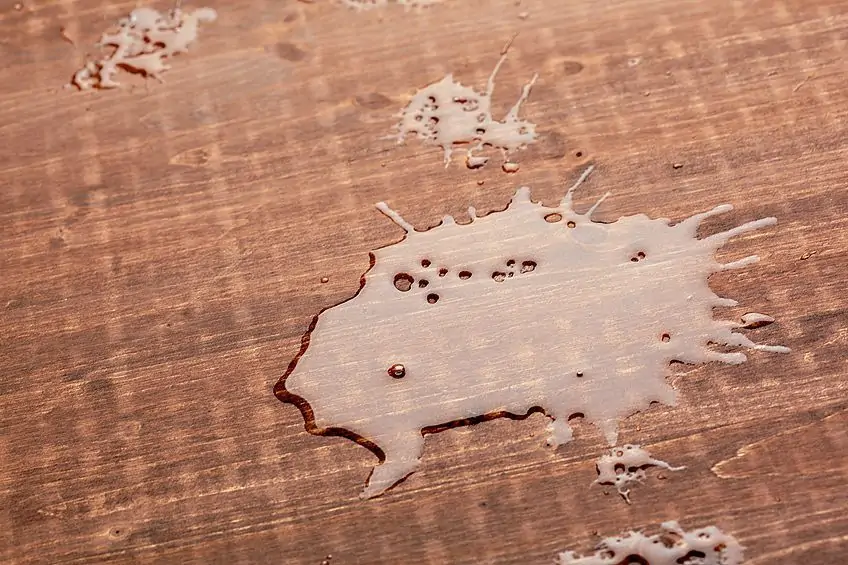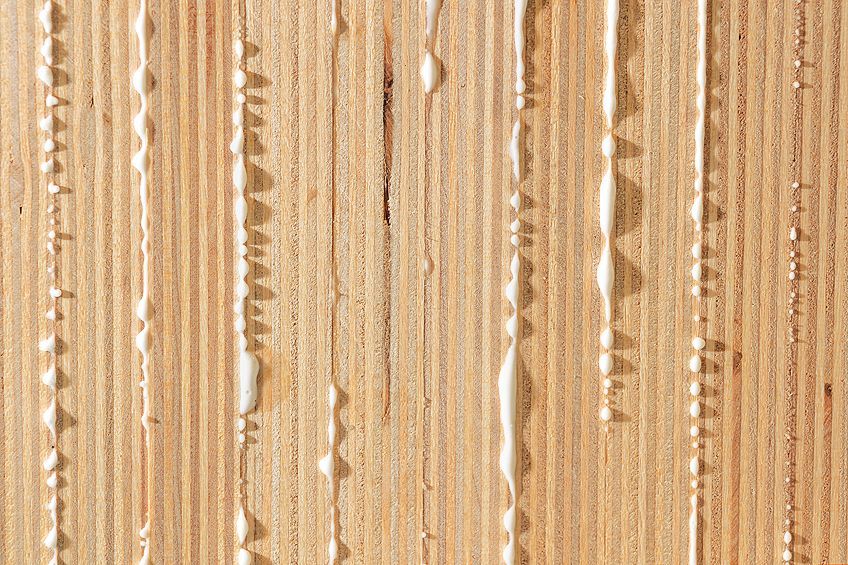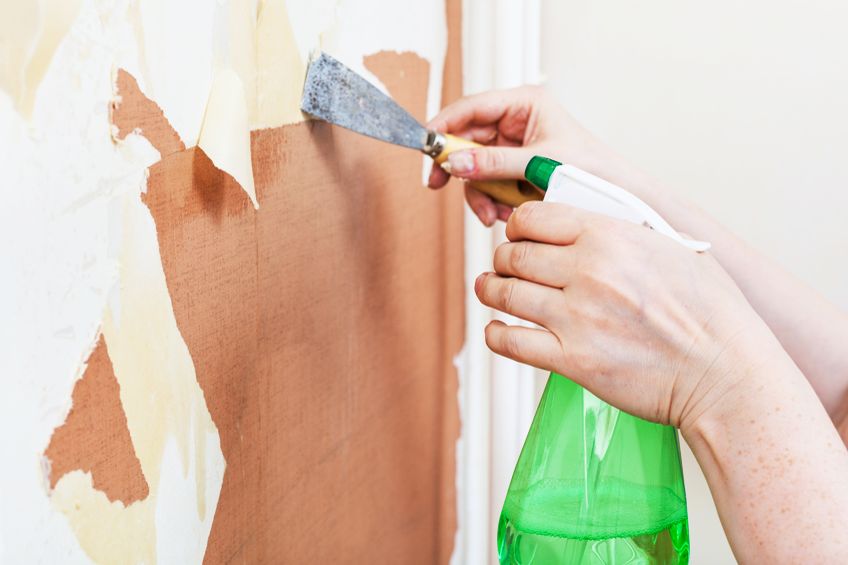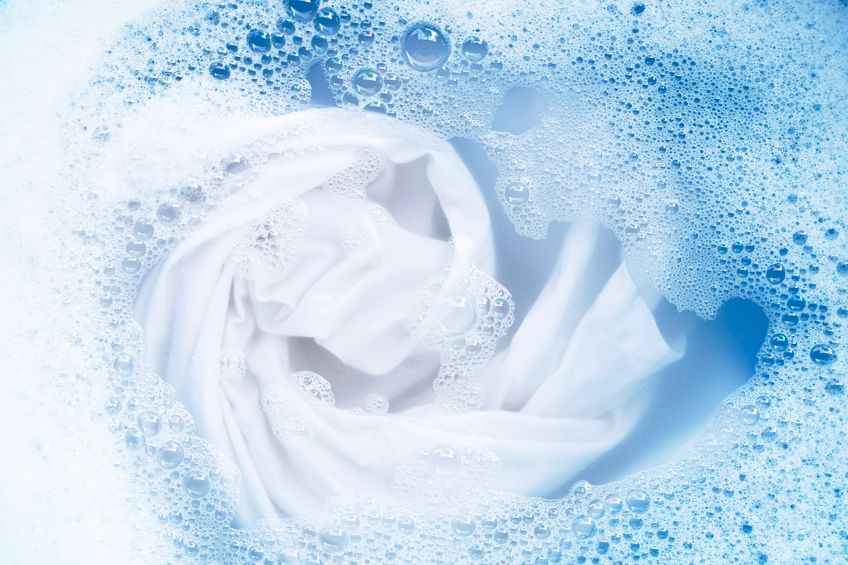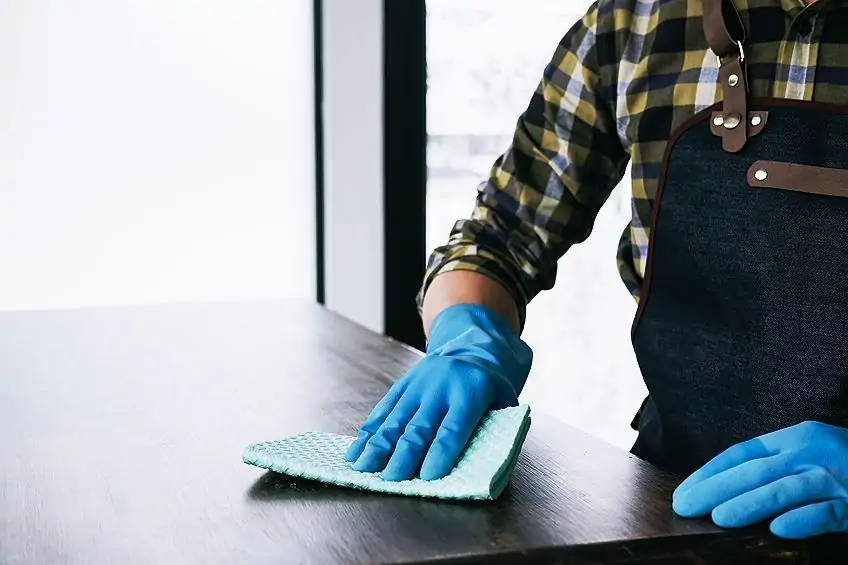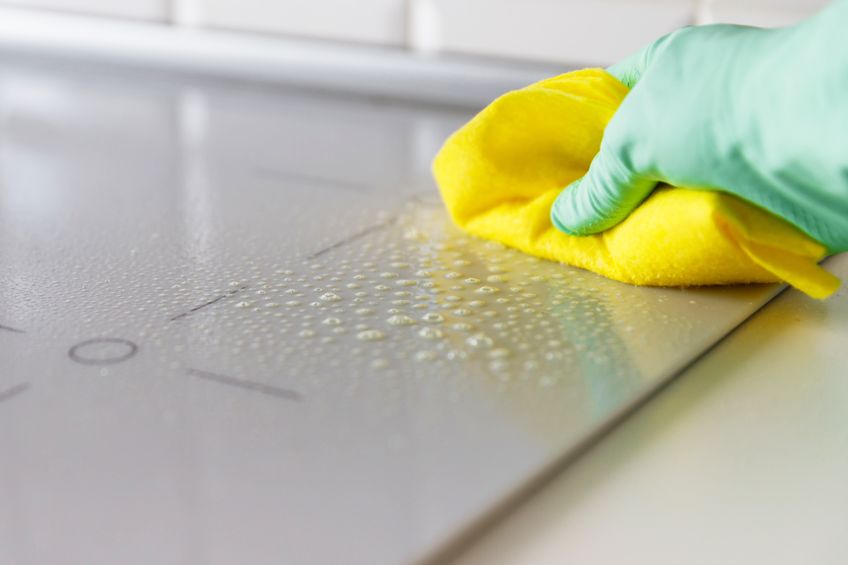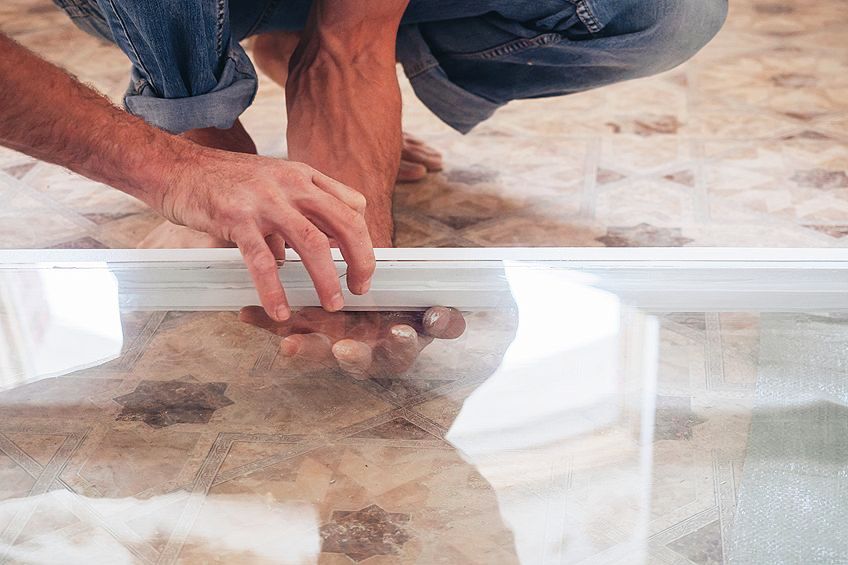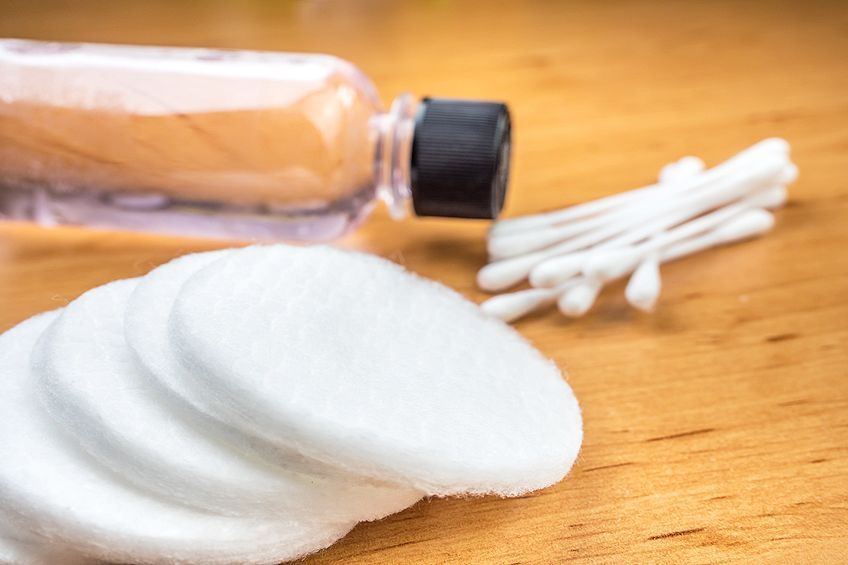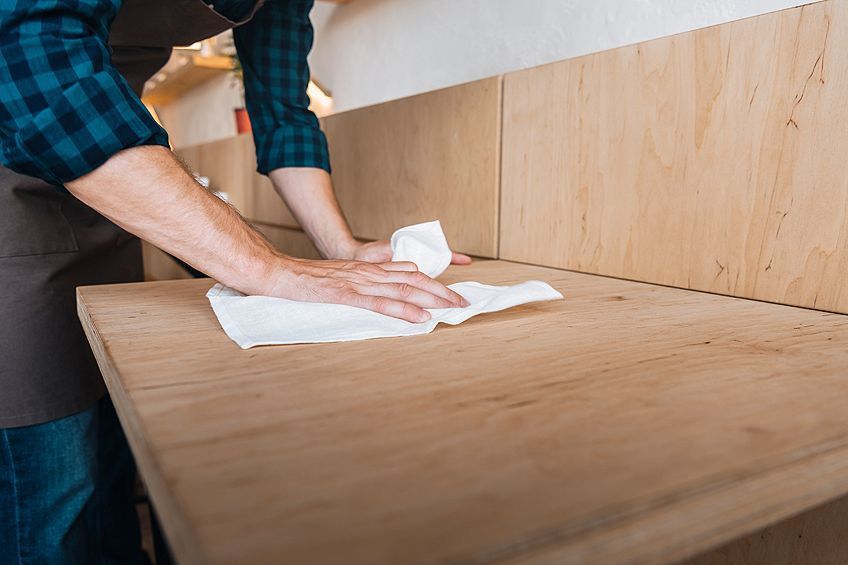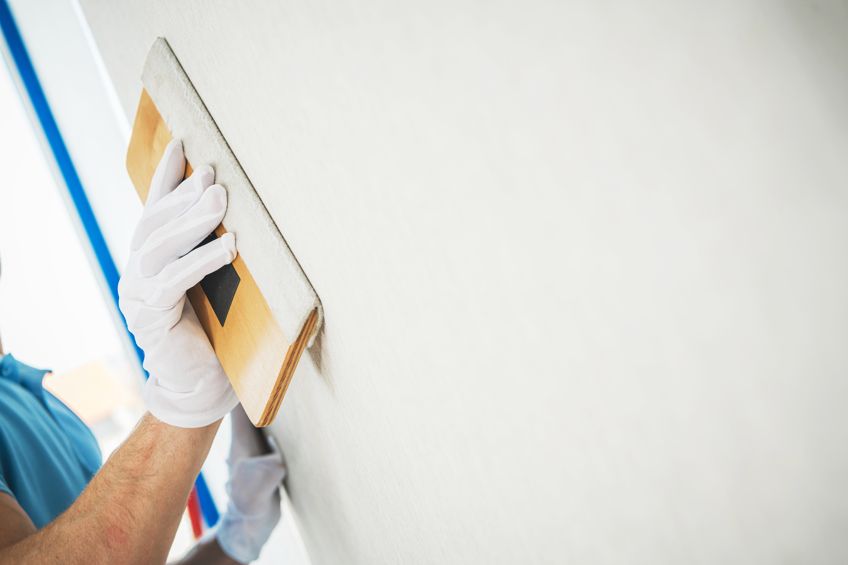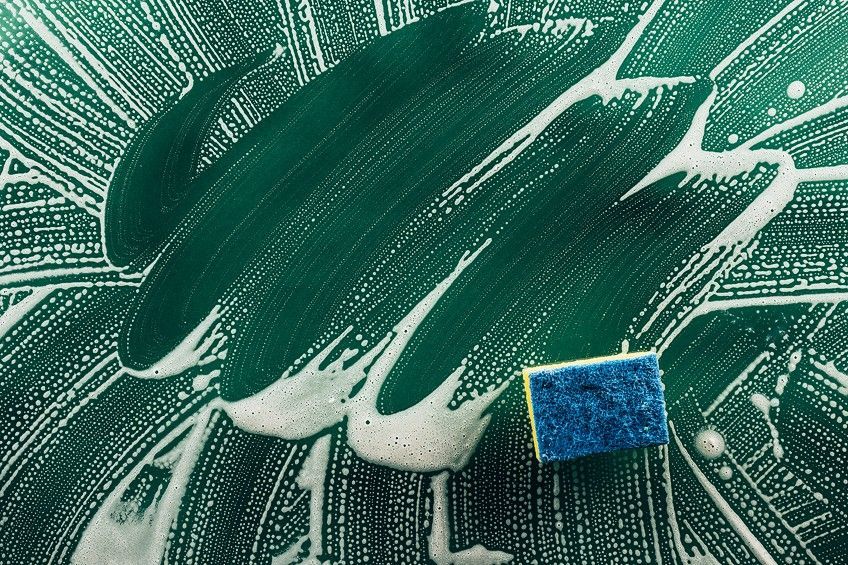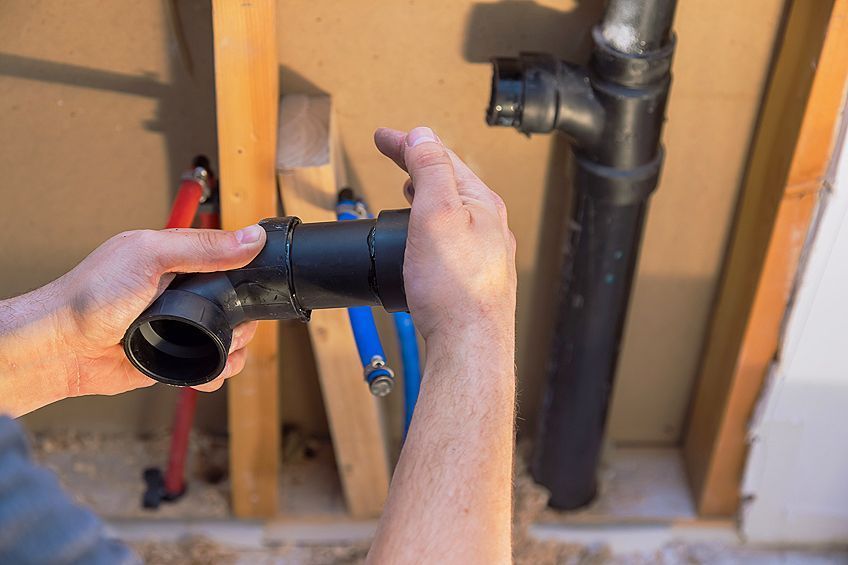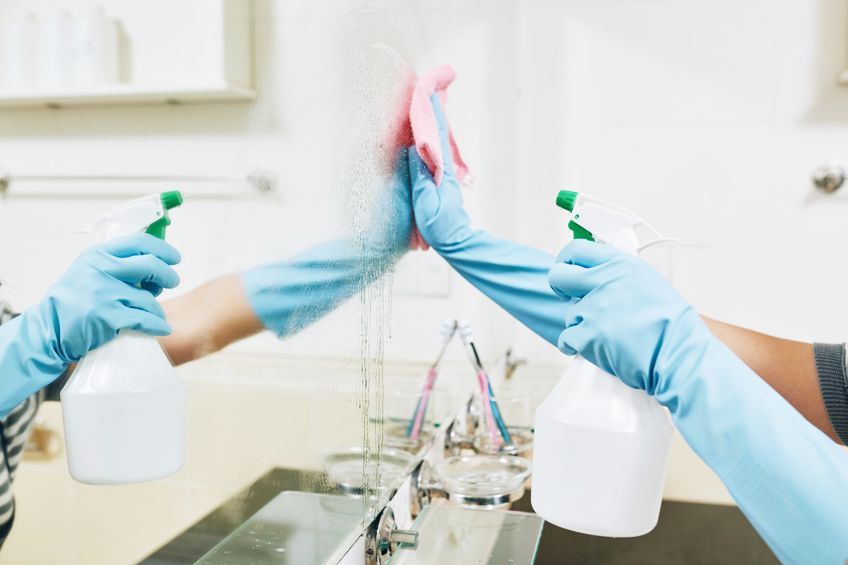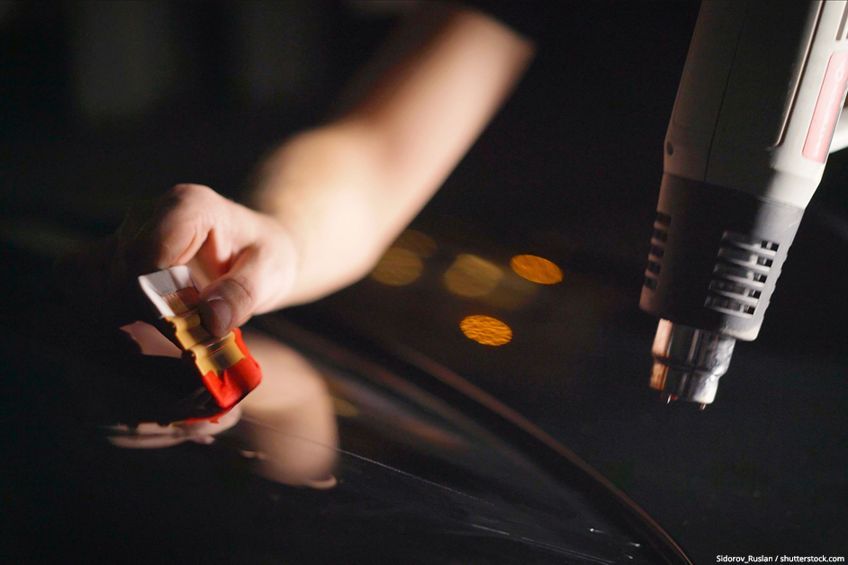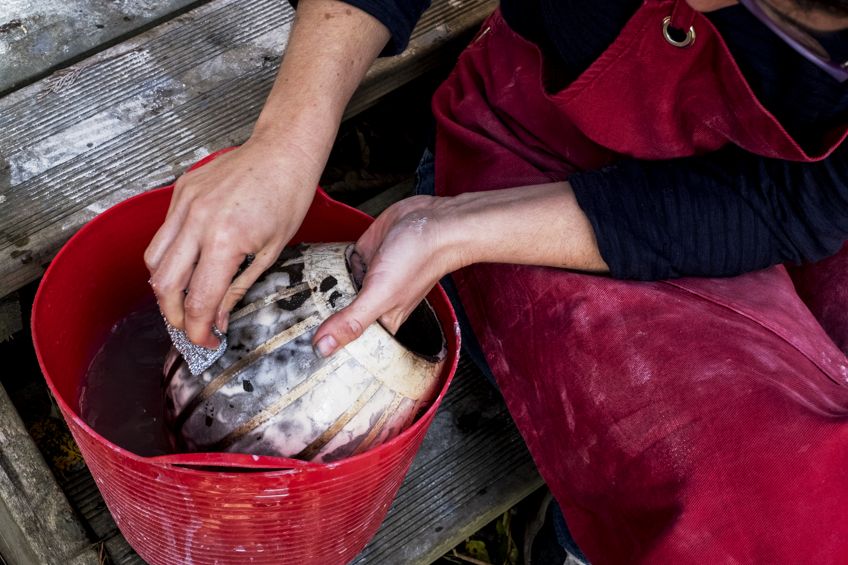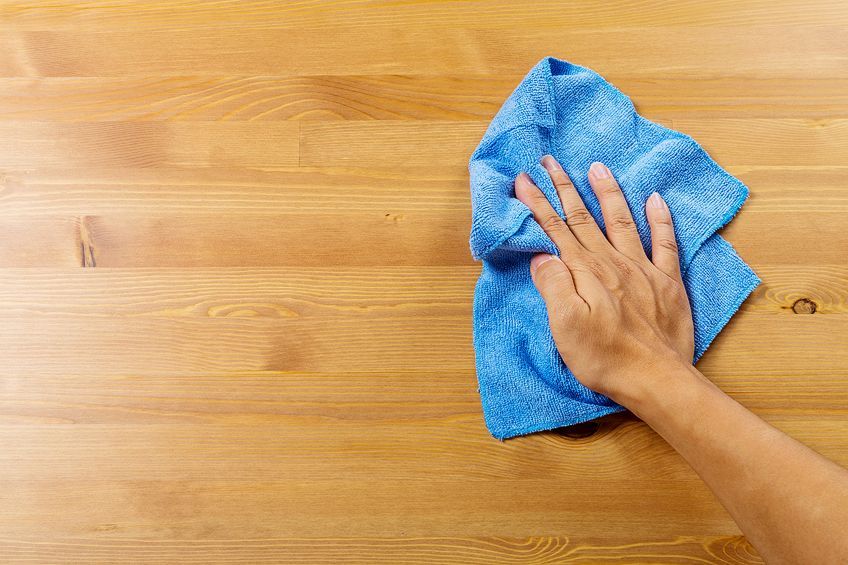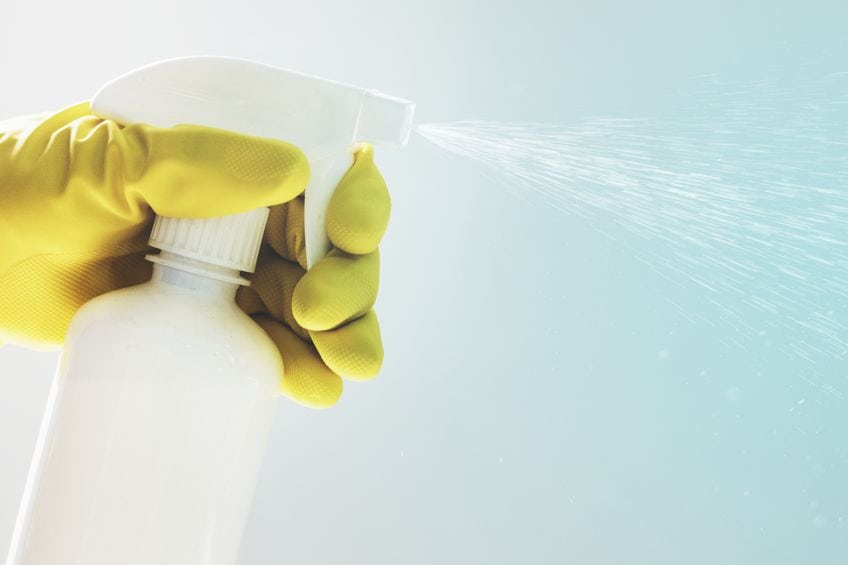How to Remove Adhesives – Best Methods with Guide
This post may contain affiliate links. We may earn a small commission from purchases made through them, at no additional cost to you. You help to support resin-expert.com
Every year we spend a great deal of money buying glue, cement, tapes, and various other types of adhesives, that we use to bond different things together in our homes. All of these adhesives make a powerful and often permanent bond. However, what happens if you want to get rid of the bonding agents from the surface? For this purpose, you will need an equally strong substance to remove the residue. There are a vast number of different types of adhesive removers on the market and the type you choose will depend on what you need to remove, and how and where you want to apply it. So, in this article, we will be helping you decide on the best adhesive remover for your situation.
Table of Contents
- How to Remove Adhesives
- What is an Adhesive Remover?
- Where to Use Adhesive Remover?
- Issues to Bear in Mind When Buying Your Adhesive Remover
- How to Use Adhesive Removers
- Methods to Use When Removing Adhesive Residue
- Best Application Methods for Adhesive Remover
- Household Adhesive Removers
- Tips to Follow When Applying Adhesive Remover
- Frequently Asked Questions
How to Remove Adhesives
If you are using adhesive remover on your car, at the office, or in your home, you must select the right option for your particular needs as they are not all the same and do not all have the same ingredients. Also, remember to test a small section first before you apply the remover over the whole surface and then find out it has damaged your item.
Removing Adhesive from Wood
When you apply super glue to wood, there is always a certain excess remaining. Labels or stickers can also leave a glue residue that is tough to take off. Let us have a look at some useful tips on how to remove glue residue from wood without damaging the wood surface.
Removing Adhesive from Metal
When removing glue residue from a metal surface, take some rubbing alcohol (isopropyl alcohol), apply it to the area with a cotton ball or clean cloth, and allow it to soak in. Most adhesives will break down and then you can remove them with a scraper or cloth. This method is effective and the rubbing alcohol will not cause any damage to the metal surface.
If you do not have any rubbing alcohol, then baby oil is also a very effective alternative.
Removing Adhesive from Plastic
Glue and labels can leave sticky adhesive residue on your plastic and most of the harsh chemicals and solvents will cause damage to plastic surfaces. So, the best option is to use warm soapy water and rub the surface firmly to remove the residue. If this method is not effective, then try some vinegar as this is more powerful than water and will not damage your plastic.
Making Use of Household Products
If you want to go the environmentally friendly way, try some vegetable oil or vinegar. Saturate a piece of paper towel, apply it to the area and leave it for a few minutes. Now just peel the unwanted glue residue off. Take extra care when applying oil to unfinished wood, as it may result in the wood darkening slightly. A few more options include petroleum jelly and vaporizing rubs, which have also been found to be effective.
Using a Wet Cloth
Take a container and add some water and a small amount of household detergent, then wet a cloth with the solution. Now rub the surface with the wet cloth to remove the residue. Do not soak the wood too much, as it could result in the wood warping or swelling.
Chemical Solvent Adhesive Removers
Maybe you have had very little success with all of the above methods? You can then try more powerful removers such as paint thinners, rubbing alcohol, acetone, or lighter fluid. Rub the remover into the area, then wipe down with a moist cloth. Before applying any of the removers, it is best to apply on to a small area first.
Ensure you always work in an area that has good air circulation and use protective equipment.
Applying Heat
Here you can use a hairdryer or even a heat gun on low heat as a glue cleaner for wood. Heat the area, then as the heat loosens the bond, take a scraper, and scrape the residue off. Remember to keep the hairdryer directed at the glue you want to remove all the time while scraping until all of it has been removed.
Glue Removers
You can also try some commercial glue removers, especially the citrus oil varieties. Also, check out our recommended best adhesive remover above. When making use of these products, you must always follow the product directions.
Using Sandpaper
If all else fails, sand the area down with some sandpaper. Start with 80-grit to get rid of the glue residue, and then follow up with 120-grit and 220-grit sandpaper to get the wood surface smooth again. Try not to work too harshly as you only want to remove the glue and not the finish.
Removing Adhesive from Fabric
To not damage your clothing when removing glue residue from fabric, you need to use a gentle touch. In this case, most of the stain removers on the market will work. Simply soak the area, allow it to stand for a few minutes, and then wash it using a gentle cycle.
If the adhesive does not come off, then try diluting some ammonia in hot water and soak the garment in it. Otherwise, use some alcohol-based sanitizer applied to the area. Be sure to first test a small area to avoid damaging your clothes.
Removing Adhesive from Glass
By using acetone or nail polish remover, most of the glue residue can be removed, Simply apply the acetone to the area and rub gently, the glue residue should come off easily. If this method is unsuccessful, apply a very small amount of spray lubricant which will be able to break down the adhesive, and then using a clean cloth, wipe it off.
Make sure to clean the area properly after the glue residue has been removed.
What is an Adhesive Remover?
Adhesive removers are chemical substances that are specifically designed to dissolve or break down the bond that has been formed on the surface where you applied the glue. After applying the adhesive remover and allowing it to soak for a while, it will soften the adhesive and turn it into a paste or a liquid. This can then be peeled, scraped, or wiped off the surface.
Remember that all adhesive removers are not the same, as they are designed using a particular formulation that might not work on all surfaces or all adhesive types. Most commercial-grade adhesive removers will not cause any damage to metal, paint, glass, or wood surfaces. However, industrial-grade adhesive removers can cause damage to the above-mentioned surfaces or finishes due to their stronger formulation. Before you use an adhesive remover, always try it out on a small, concealed area to ensure that it will not cause any damage to the surface or finish.
Where to Use Adhesive Remover?
Adhesive removers are used to remove a large range of sticky messes, most of which are impossible to remove by soaking and scrubbing with warm soapy water. This is why we need to look at adhesive removers that can break down and remove those sticky messes from your surface. The reason why warm soapy water is not that effective is that it is unable to break down the strong bond that has formed at a molecular level.
We have listed some of the uses and places where an adhesive remover can be effectively used below.
In the Home
Some of the adhesive removers have a degreasing agent that has been added to them which helps in removing grime, grease build-up, dirt building up as well as slime from bacteria. Your home can make use of an adhesive remover, especially if you have teenagers who stick pictures and posters on walls and often leave a mess behind after applying their make-up. Not to mention the small kids that find it no problem to use crayons and permanent markers on the walls.
Many times, we find candle wax and glue messed on tables and other surfaces, as well as shoe polish, messed on the floor. A good adhesive remover will take care of all these problems. How many times have you struggled to remove the glue residue from labels and stickers from glasses and other items in your home? By applying an adhesive remover this problem is solved with ease. Adhesive removers can also be very effective in removing grease and tar marks from your vehicle.
Using Adhesive Removers at Work
Restaurants and other businesses can benefit by using an adhesive remover to remove adhesive residue from walls and various types of equipment. Hospitals and clinics can use adhesive removers to clean rooms and equipment as well as masking, packaging, and clear tape residue.
Teachers in schools can use an adhesive remover for glue, chalk, and permanent marker messes.
Issues to Bear in Mind When Buying Your Adhesive Remover
As there are so many different types and formulations of adhesive removers available, it is difficult to know which one to choose. You may want to remove tape or label residue from glass, remove glue off your luxury sports car, or remove some adhesive residue from your skin. Whatever your need, your choice of an adhesive remover is very important. We will now be going over a few of these issues to help you make a good choice.
Type of Formulation
Remember that not all adhesive removers are the same as they make use of different ingredients that break down and soften the adhesive residue. Most adhesive removers fall into three main categories, which can be listed as follows, citrus, soy, or solvent-based.
Each works differently to help clean up your gluey messes.
Type of Surface
You need to consider what type of surface you want to remove the adhesive from, this is important as some of the adhesive removers may damage a particular surface. You need to choose the correct formulation, and this will often be stated on the label. A list of surfaces that you can use the product on should also be given like wood, stone, metal, fabric, or whatever else it is safe to use on. So, always read the label carefully.
Not only is the type of surface important but knowing the type of adhesive you want to remove is just as vital. Some glues are more difficult to get rid of than others, these are referred to as ‘reactive adhesives’ and make use of a chemical hardener to give additional strength. This type of adhesive will require a stronger adhesive remover that can break down the strong bond, which is usually solvent-based adhesive removers.
Citrus-Based Adhesive Removers
These types of adhesive removers are made up of 80 percent citrus fruit extract, and the other 20 percent may include halogen, chloride, fluoride, and sulfur. These adhesive removers are usually eco-friendly. Not only can they clean up adhesive residue like stickers or tape residue, but they are also effective in cleaning up mildew and grime in your kitchen and bathroom.
Citrus-based adhesive removers are mild to use and have a pleasant odor. They can also easily be cleaned away with some water.
Solvent-Based Adhesive Removers
These adhesive removers are the strongest glue removers and have active ingredients like ethylbenzene, naphtha, xylene, benzene, and toluene. For example, Goof Off adhesive remover. These types of removers are specially designed to go deep into the glue residue and break up the bond, making it easy to remove. They should only be used when the citrus and soy-based options are unsuccessful. Care should be taken when using these removers, making sure you work in a well-ventilated area, and you have safety equipment on as the chemicals are flammable and toxic.
If you want to use them for lighter purposes, it is advisable to first dilute with water or other chemical solution. Take note and read the label instructions, as some of the chemicals used like ethylbenzene may cause cancer. Also, methanol has been linked to certain birth defects as well as reproductive damage.
Soy-Based Adhesive Removers
These types of adhesive removers contain soybean oil as well as propane and are also an environmentally friendly option. They are stronger than the citrus-based removers and are used mostly for industrial applications. However, they can be used in the home for removing mastic adhesives that are used for tiling and carpet glues.
Since this type of adhesive remover has no xylene chemicals, you need to leave it for several hours to soften the old adhesive. You can then easily clean it off using some water.
Application Type
You have now decided on what type of surface you are working with and what type of adhesive you want to remove, and now we need to decide the structure or makeup of the adhesive remover that will be the right one to use. Most of the adhesive removers are supplied in three different types of forms.
Liquid or Spray Type
The spray or liquid form of adhesive remover is easy to apply and can be used on fairly large areas. You can use this type by application directly onto the glue, or you can saturate a cloth and then apply it which gives you a little more control over the application.
Paste Type
These types of adhesive removers usually come in tubes, and it is a lot harder to apply them. You need to spread them over the surface, which can become messy in itself. The viscosity of the past removers can make it difficult to apply.
Wipe Type
These types of adhesive removers are supplied in wipe form and are usually intended to be used on the skin. They are easy to use and are mess-free. They may require a certain amount of rubbing to remove all the glue residue, and also more than one wipe is usually necessary.
Glue Remover Price
Just like any other product you purchase, sometimes cheaper is not necessarily better. The more expensive formulations are also more powerful and effective like the solvent-based removers. The citrus and soy-based removers are slightly cheaper; however, they are not as strong.
The choice might not be an issue if the surface you want to clean will be damaged by a solvent-based remover. In this case, the citrus or soy-based types may be best.
These adhesive removers are supplied in tubes, cans, bottles, tins, and sprays. They also come in different strengths and sizes and can be used on most surfaces like plastics, glass, furniture, carpets, floors, skin as well as clothing. By choosing the right products to clean up the mess, and the job will mostly be done. Always choose the right formulation for the surface you are working on. Here are some recommended products for the best adhesive removers available.
List of the Best Adhesive Removers
To try and help you with this important decision of selecting the correct adhesive remover for your need, we have compiled a list of some of the most popular brands on the market and compiled a table that we trust will be of help to you.
| Brand of Adhesive Removers | Non-Toxic | Toxic |
| Goof Off adhesive remover | ✘ | ✔ |
| Desolv It adhesive remover | ✔ | ✘ |
| Goo Gone adhesive remover | ✔ | ✘ |
| Krud Kutter adhesive remover | ✔ | ✘ |
| 3M adhesive remover (General purpose) | ✘ | ✔ |
| Custom Shop Series adhesive remover | ✘ | ✔ |
| Elmer’s Sticky Out adhesive remover | ✔ | ✘ |
| Uni Solve Wipes adhesive remover | ✔ | ✘ |
| Brava Spray adhesive remover | ✔ | ✘ |
| Duck Brand adhesive remover | ✘ | ✔ |
| Rapid Tac adhesive remover | ✔ | ✘ |
How to Use Adhesive Removers
You may take extra care when working with glue, but you may find that it still leaves behind stains on surfaces like clothes, work areas, skin, and tools. Therefore, you need to know how to get rid of the glue without damaging the various surfaces.
Examination
You first need to inspect the type of material your item is made from before you start applying any adhesive remover. This helps you to determine what type of adhesive remover to choose. This is of vital importance as not all types of material can be treated the same. When using a solvent, it may damage the material. If you are working with a fabric item, then you need to check the label to see if there are any precautions as to what type of substance you can apply to it.
Purchase
Now that you know what type of material you are working with, you can go out and buy your adhesive remover. As there are so many different types of adhesive removers available, you need to be sure you buy the correct one.
You may also decide not to use the solvent type that has harmful chemicals and rather go for the more environmentally friendly option.
Preparation
If you are going to use a solvent-based adhesive remover, then be sure your work area is properly ventilated or better still try to work outside. If the area you want to clean is fairly large, then it is advisable to lay some old newspaper or plastic sheeting down to protect the floor or table you are working on. Also, ensure you wear some latex gloves and a facemask to protect your skin and face from harmful solvents.
Applying the Solvent
Try to apply the adhesive remover directly to the residue you want to remove. Before you go ahead, first, try it out on a small hidden surface area to see if it causes damage to the material. When cleaning glass or mirrors, dip your clean cloth into the adhesive remover and wipe the glue residue off. When a more forceful action is needed, then dip your cloth into the remover and wrap it around a dowel stick and scrape away the glue residue.
Avoid saturating the area where you have the residue, as this may come into contact with other sections where you do not want it to be. If it is a fairly large area, dampen the cloth in the remover and lay it over the area. Finally, leave it for a few minutes to loosen the glue residue, then scrape the softened glue off.
Finishing off
Make sure you clean the entire adhesive remover off of the item where you applied it, as chemicals left behind can cause damage to your finished work. Moisten a cloth in some vinegar or warm water and wipe the surface clean, if it is fabric, then you can wash them as normal.
Methods to Use When Removing Adhesive Residue
There are several types of adhesive removers, and you need to understand what method to use and what type of adhesive remover to use for the different materials you are working with. You may be able to use ordinary soap and water, but at times when the residue is more stubborn, it may also require some special techniques or the use of solvents. Some of these techniques include mechanical, chemical, and thermal removal methods.
Mechanical Technique
Many glue spills can easily be removed with a scraping tool or even with your hands. Some of the various scraping tools you can use are paint scrapers, plastic pan scrapers, or even use the old razor blade. When using the scraper method, try not to damage any other softer surfaces or areas you do not want to remove. You also might want to go for a plastic scraper for more delicate surfaces.
Chemical Technique
The chemical method makes use of a solvent over the affected area. The solvent then breaks down the properties of the adhesive, and you can then wipe off the softened glue residue. When you have decided on what is the best solvent adhesive remover, you must take into account the material that you are working with, as well as how thick the adhesive has been applied.
If you are looking for a more environmentally-friendly remover, you can use ordinary cooking oil or any oil-based material like peanut butter or mayonnaise. Just apply the substance over the glue residue, give it time, about an hour, and then clear the softened residue off with a cloth.
However, if the residue is tougher and more stubborn, then you can try using rubbing alcohol or vodka. Apply it to the unwanted residue and wait for it to penetrate the residue, then wipe off the softened glue residue. As there are so many adhesive removers available, you need to be careful as all removers are not made to be used on all materials. So, read and follow the manufacturer’s instructions closely before you apply the remover.
Thermal Technique
The last method is to make use of heat to soften the glue residue, which can be found on bottles where labels have been attached. For this method, you can use a hairdryer or bake the bottles in the oven set at a moderate temperature but be careful as high temperatures can cause the glass to shatter.
Best Application Methods for Adhesive Remover
We have just discussed the three methods you can apply when removing your glue residue but let us now consider the three application methods that are available when applying adhesive removers. You can use these three basic methods of application one at a time, or you can also mix and match by using more than one of them at a time.
Soak and Wipe Application Method
This method is used when you apply the adhesive remover, allow it to soak for a while, and then wipe it off by using some paper towel or an earbud. This method is used when you want to use as few chemicals as possible, usually when working with delicate items such as antiques or fabric.
Spraying Application Method
This method is best used when you want to cover a larger surface area. The spray-on formulation comes in spray bottles or aerosol cans. Remember to always work in an area where there is plenty of ventilation or choose to work outdoors.
Also, make use of protective equipment like safety goggles, masks, and rubber gloves
Scrape Application Method
You can make use of a plastic or metal scraper to remove the glue residue. Try not to damage the surface while scraping. This method is used mainly on hard surfaces like glass or tiles, but you need to take care not to use the sharp edge, as it will damage or scratch the tiles or glass.
Household Adhesive Removers
If you are concerned about the toxic and dangerous chemical adhesive removers, then take heart for there are some non-toxic household products you can use to dissolve those gooey messy situations. These products are usually always available around the house, so there is no need to go out and buy anything.
Vinegar
Vinegar contains acetic acid, which breaks down the bond of the glue. Apply a substantial amount of vinegar to the glue residue, and it should start to dissolve the glue straightaway. You should now be able to wipe or scrape the glue off and wash the surface clean.
Oil
Baby oil or even cooking oil can be very effective when removing glue residue. Just apply a substantial amount to the adhesive and leave for a time. You can then rub it into the glue, and you should notice the oil blending with the glue. This indicates that the glue has begun to lose its bond. Next, wipe it off with some warm soapy water and clean it with a moist cloth. The oil dissolves the glue, as many types of adhesives are oil-based.
As soon as the oil breaks down the glue’s chemical structure, you can use warm soapy water to rub and rinses the glue residue off.
Peanut Butter
The natural oil in the peanut butter is released and this oil breaks down the glue bond. The consistency of the peanut butter also helps to keep it in place over the glue. Rub the peanut butter lightly into the glue to further loosen the bond, then wash it off with soap and warm water.
Nail Polish Remover
This method can be very effective; however, you should use it with caution as it contains acetone. This should be fine for metal surfaces, but it just may damage plastic and other softer surfaces. The smell might also not be appealing.
Warm Soapy Water
This is one method that everyone can use. Soap and water can work effectively for label and sticker residue, if the adhesive used, has a water-based formulation. The warm water will loosen the bond. However, many types of tape like duct tape, for example, are water-resistant, so the warm water will have very little effect.
Tips to Follow When Applying Adhesive Remover
When applying your adhesive remover, there are some tips you can follow to make the job easier and safer. Following these tips can help save you some valuable time by not having to clean up extra spills, which could also damage your surface.
- When using a solvent-based adhesive remover, make sure that you work in a well-ventilated area. This is also a good idea, even if you are using a remover that has only natural ingredients.
- To avoid any skin irritation, make sure you wear some latex gloves.
- Protect the surrounding surface by putting some newspaper or plastic sheeting down.
- To make sure that the adhesive remover does not damage your surface, apply the remover to a small section first.
- Try using a small amount to start with and you can always add more if you need to.
Adhesive residue can be unsightly and tricky to remove. After reading this article, you should have all the knowledge necessary to to buy and use one of the best adhesive removers available.
Frequently Asked Questions
Is It Safe to use Adhesive Removers?
Some of the removers contain harmful chemicals, but if you carefully follow the instructions, they should all be safe to use. However, it is advisable to work in an area that has excellent ventilation and to use protective equipment.
Is It Safe to use Glue Remover on Skin?
Most of the adhesive removers are not intended to be used on the skin, as the chemicals will irritate your skin. Several adhesive removers are specially designed to be used on the skin, and these will do no damage to your body.
How do I Store Adhesive Removers?
Some of the removers will evaporate if exposed to the light or the air, so ensure you store them with their lid or cap tightly fitted. Also, keep them in a dry, cool, and dark place.
Can Adhesive Remover Discolor my Fabric?
It all depends on what type of remover you are using, for some of them are gentle enough and will cause no damage, while others are stronger and may damage the fibers and the dye of your fabric. Make sure to always read and follow the product directions.
How to Remove the Glue after the Adhesive Remover has Worked?
If it is a small area, you can scratch it off with your finger or a knife, but if it is a larger area you may want to use a scrapper.


